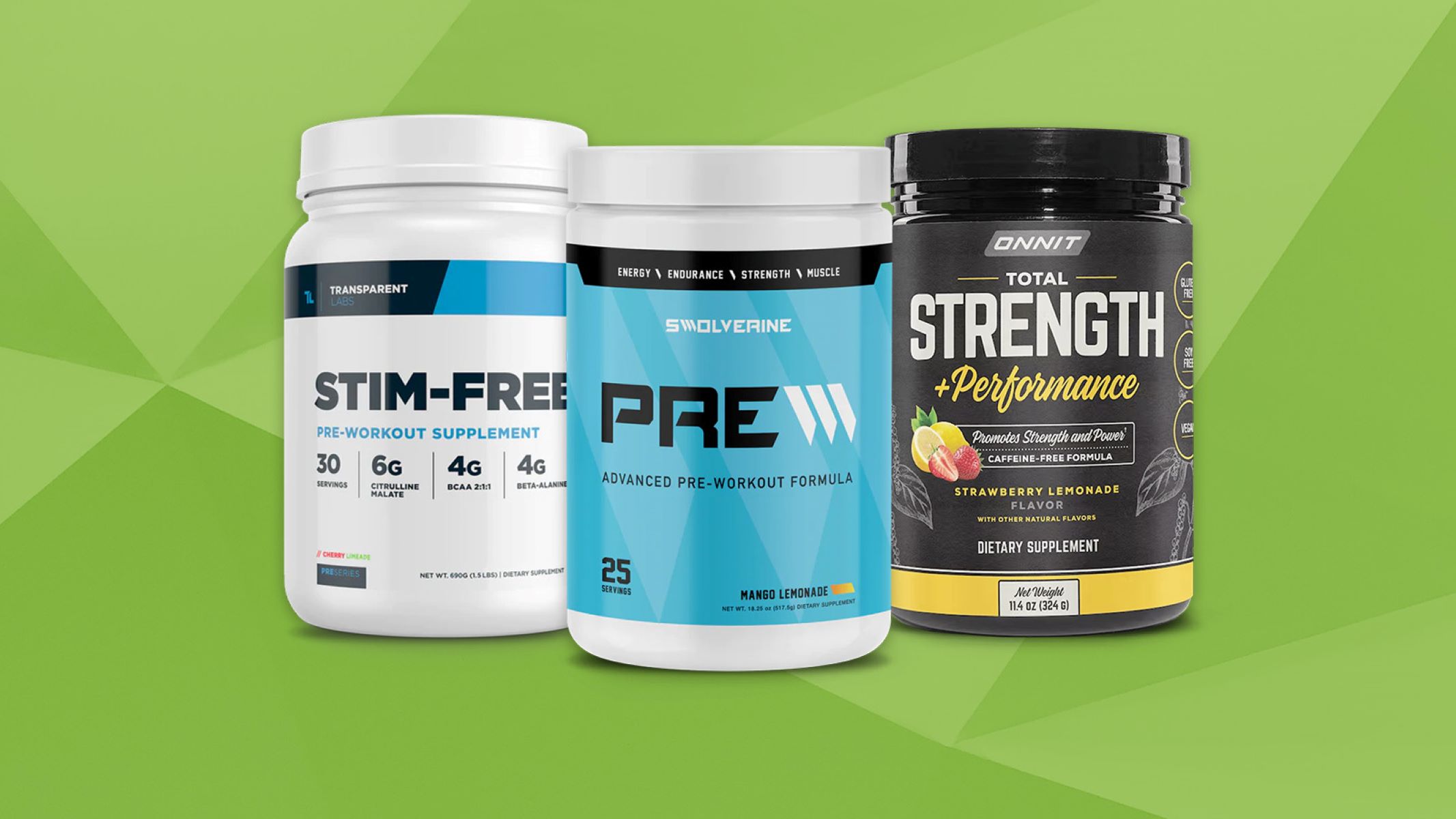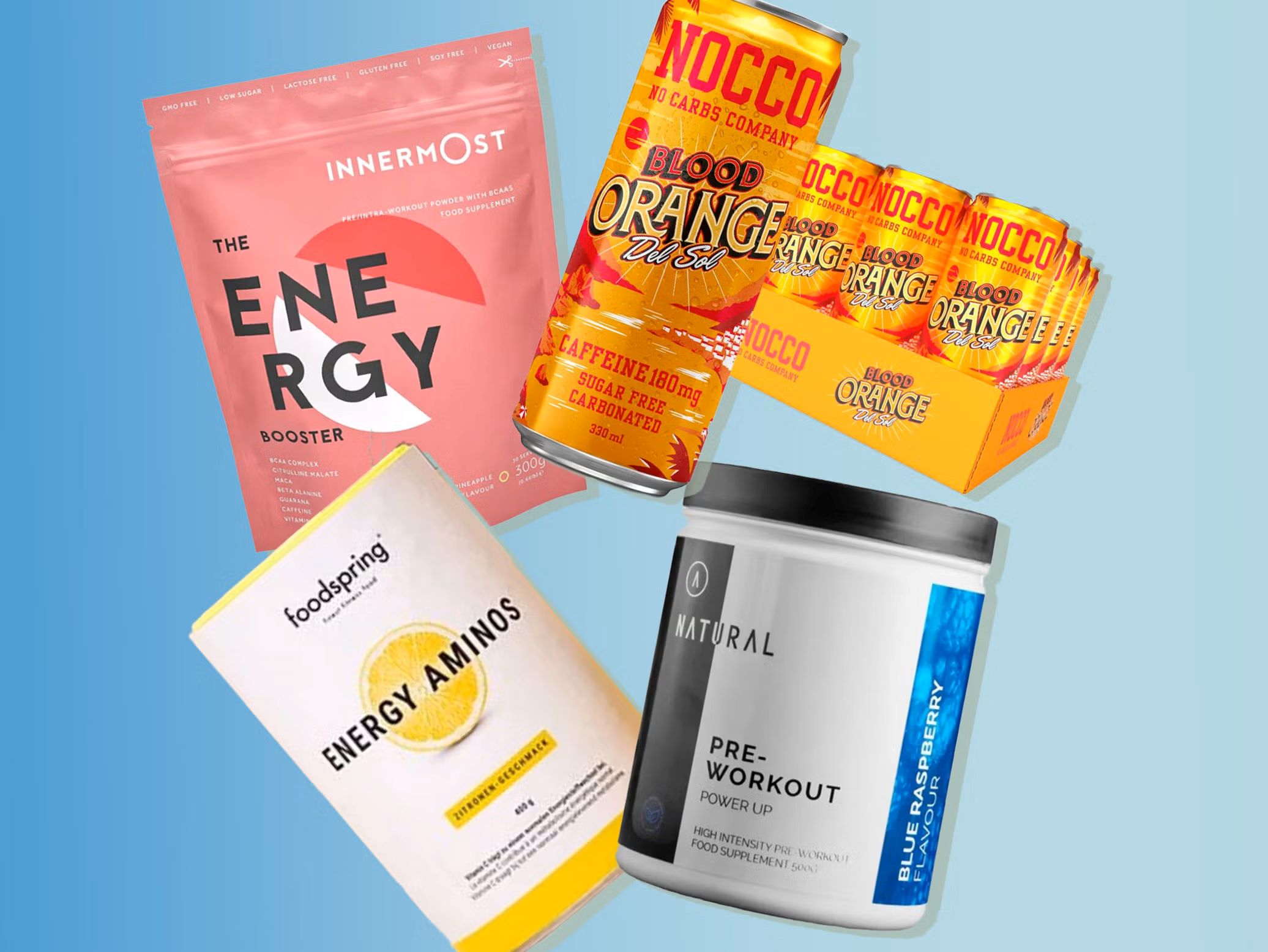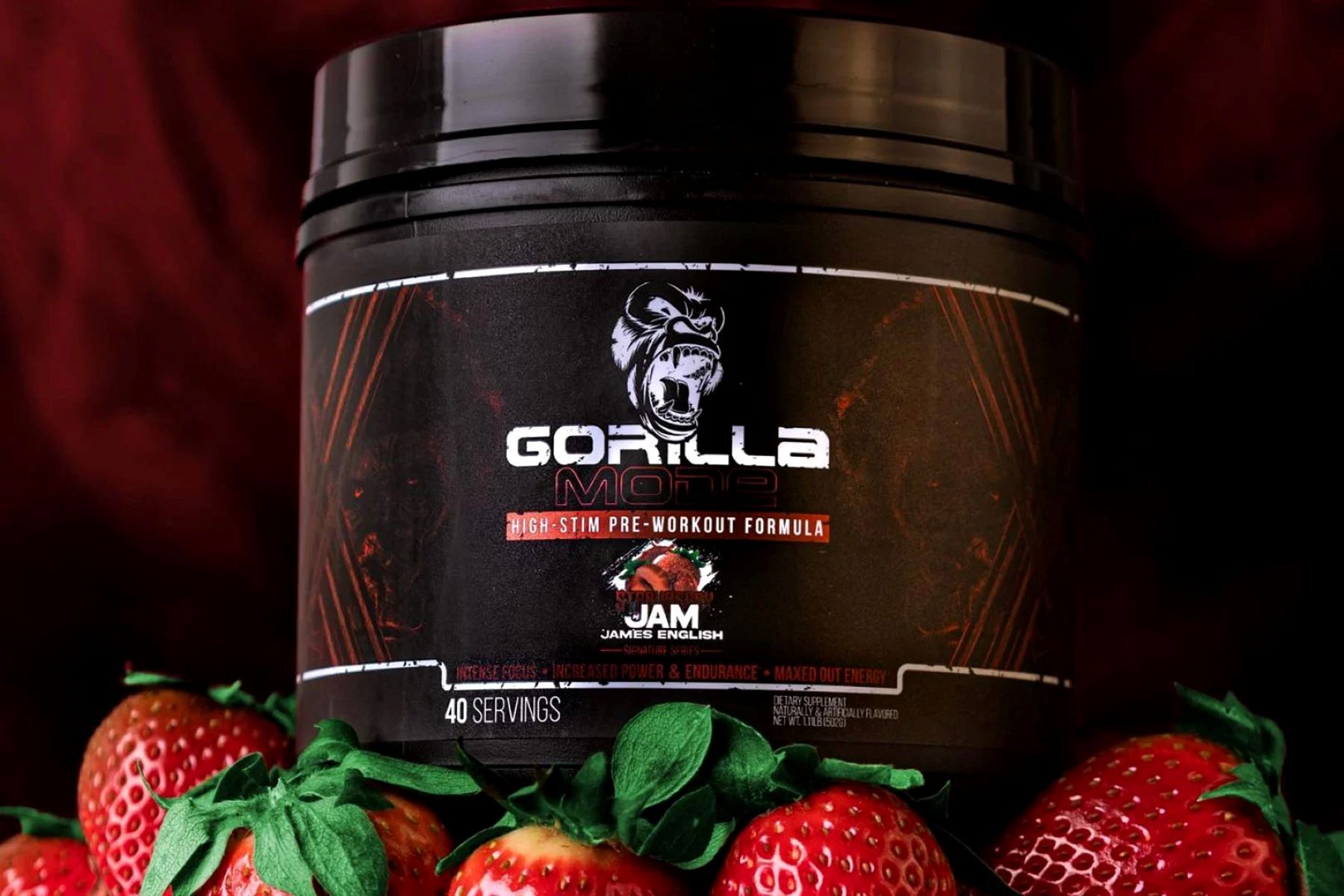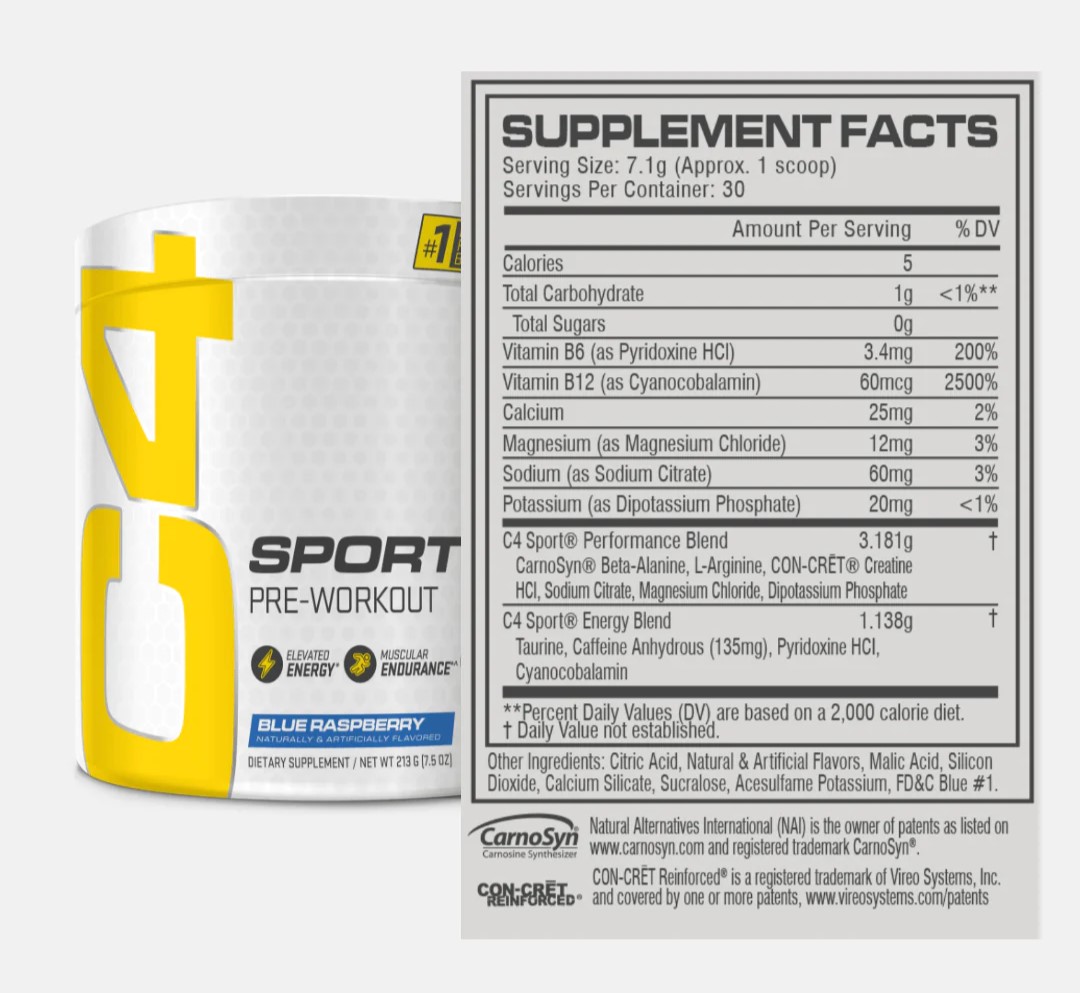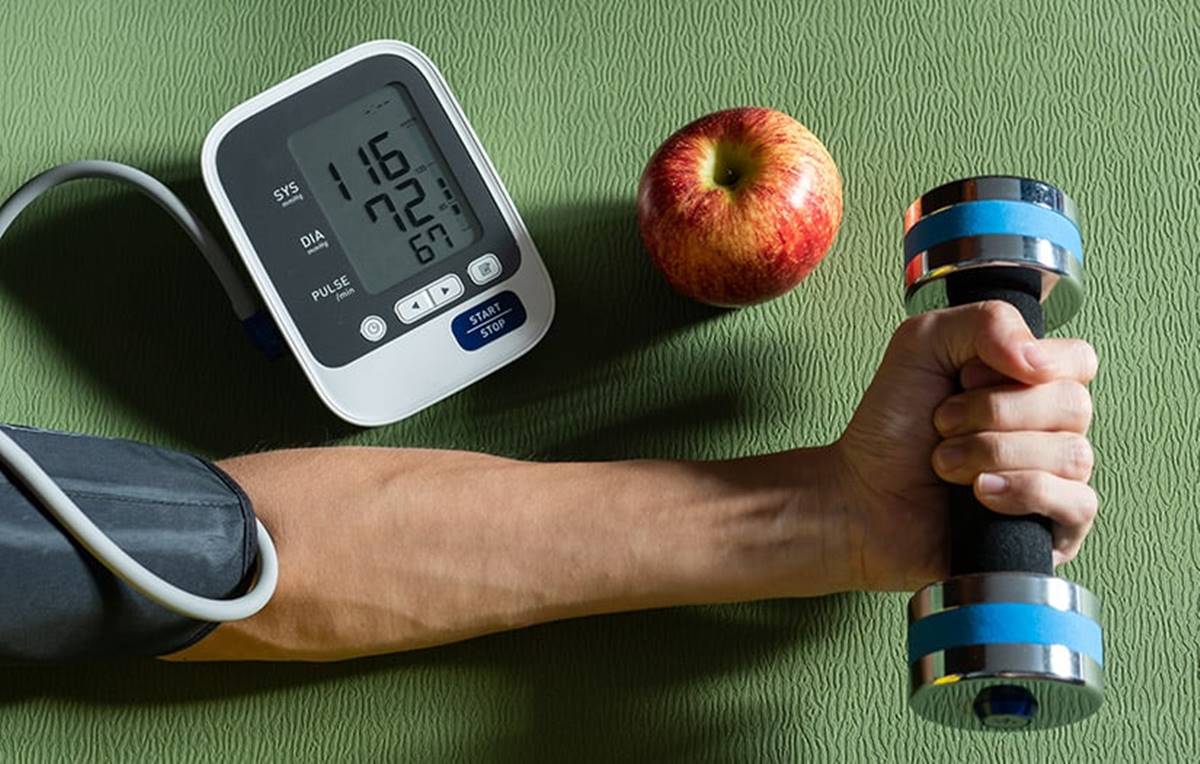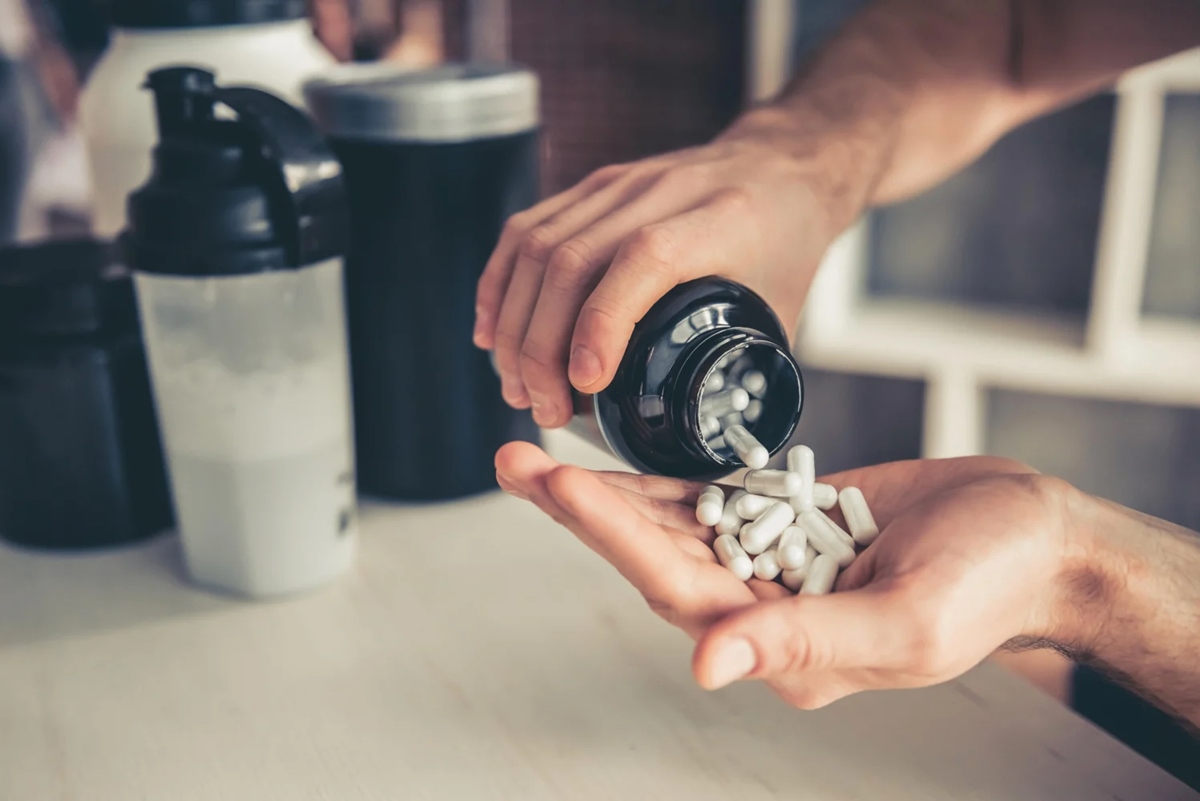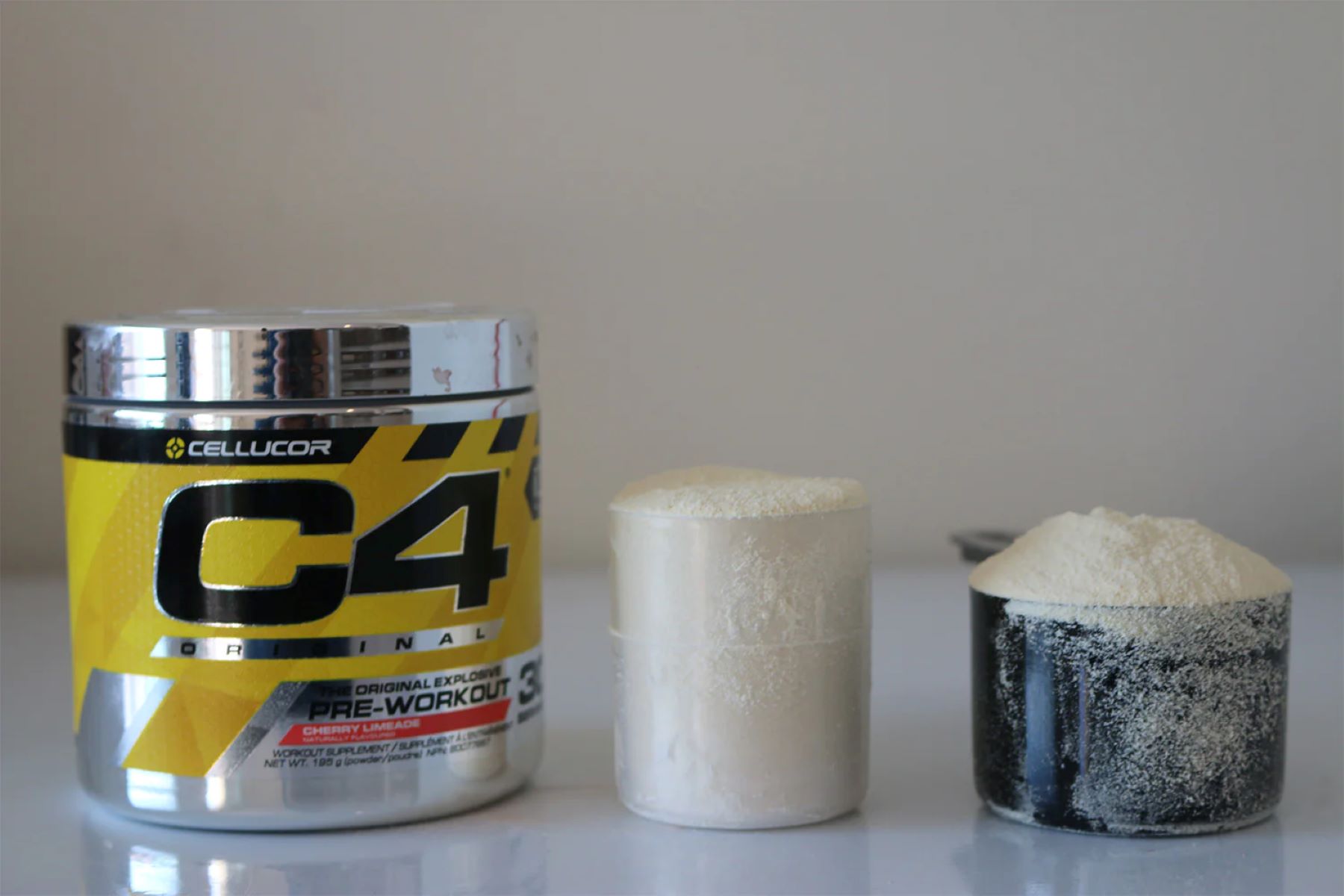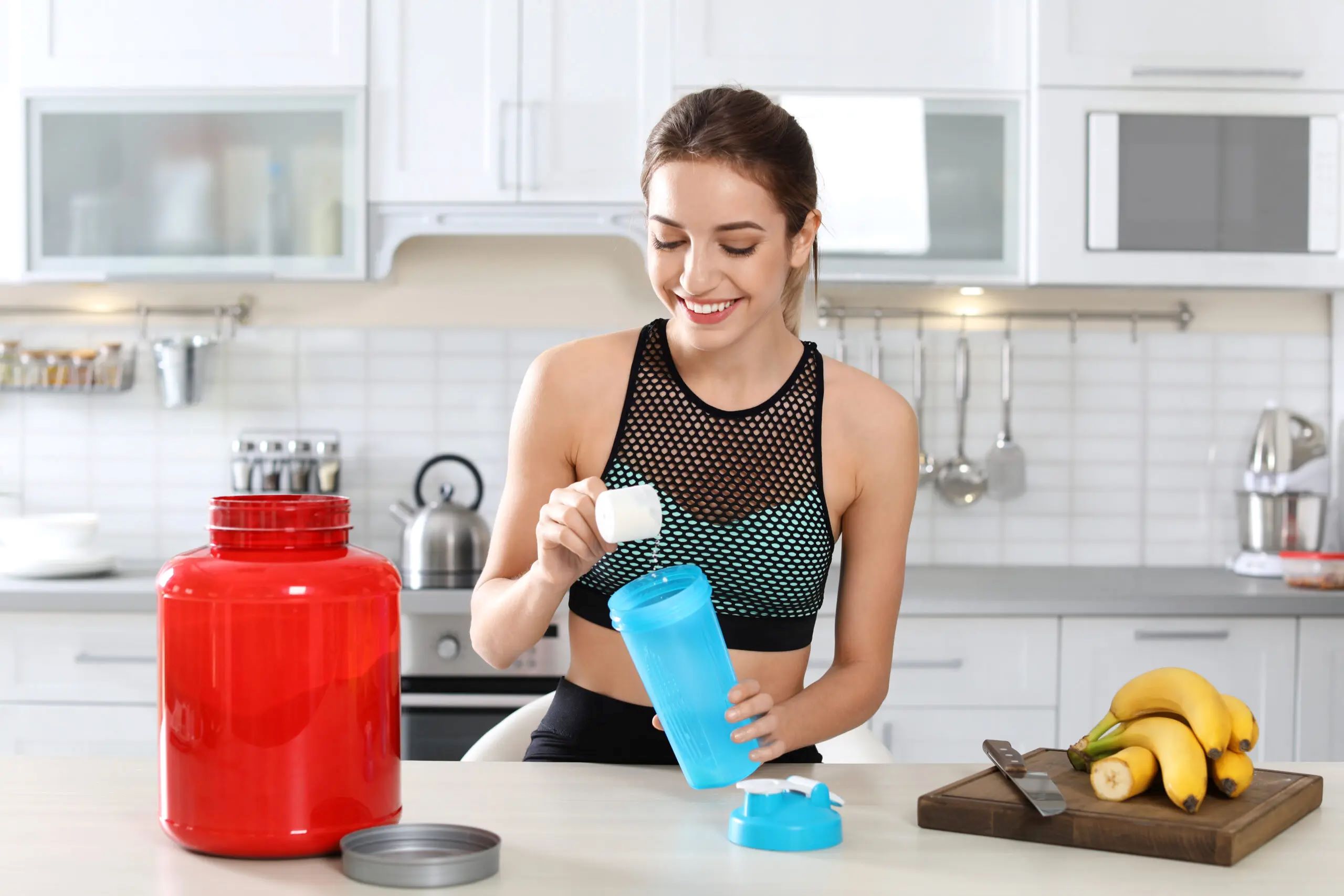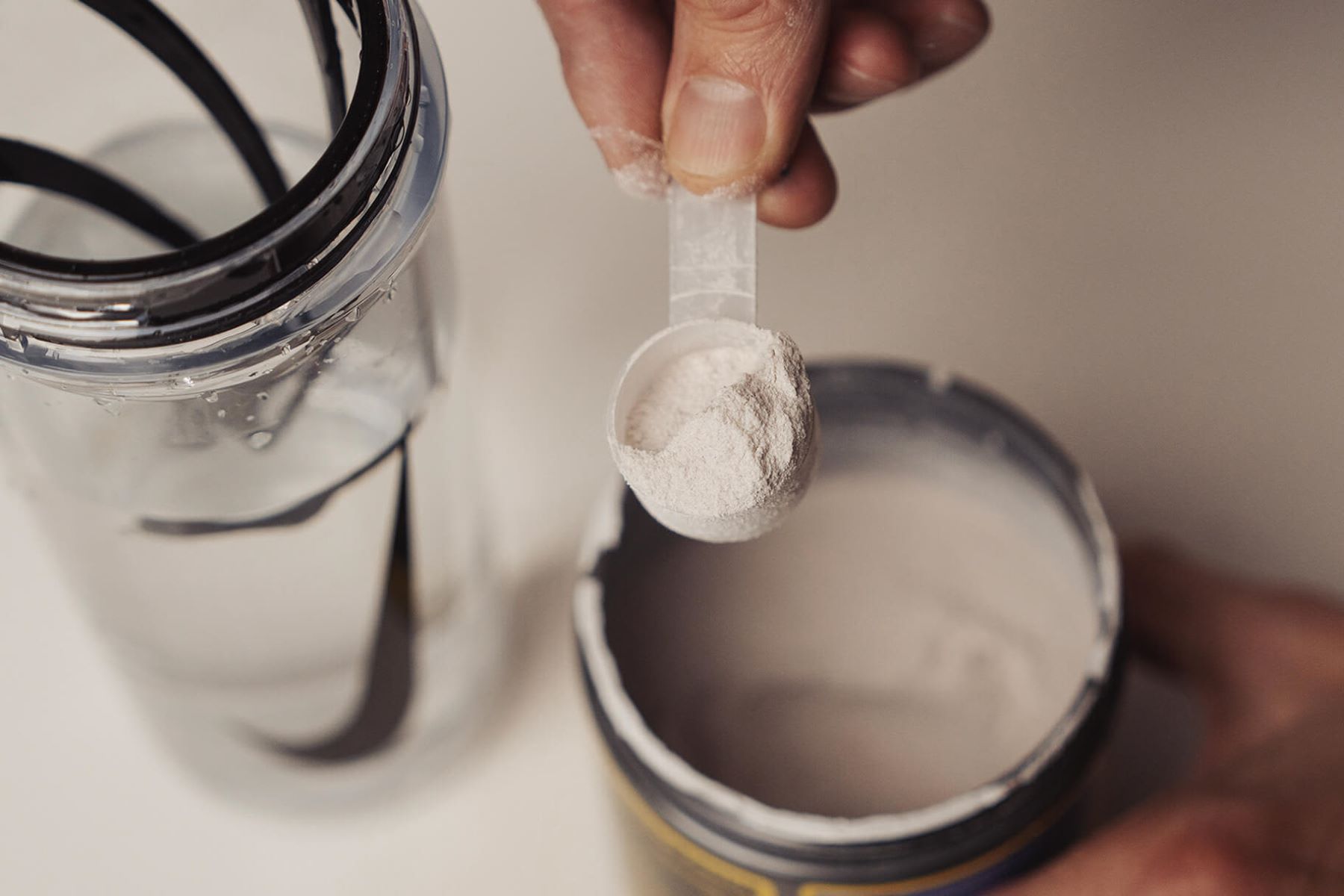

Featured
What Is Pump In Pre-Workout
Modified: May 22, 2024
Discover the benefits of including a pump in your pre-workout routine with our featured article. Learn how it can boost your performance and maximize your gains.
Introduction
Welcome to the world of pre-workout supplements! If you’ve ever stepped foot into a gym or engaged in any kind of physical fitness, you’ve likely heard about “pump” in pre-workout. But what exactly does that mean? What is pump in pre-workout, and why is it so important to athletes and fitness enthusiasts?
Pump in pre-workout refers to the sensation of tightness and fullness in your muscles during a workout. It is commonly associated with increased blood flow, which leads to expanded blood vessels and a surge of nutrients and oxygen being delivered to the muscles. This physiological response is often sought after by athletes as it provides numerous benefits that can enhance performance and aid in achieving their fitness goals.
Whether you’re aiming to build muscle, improve endurance, or boost overall athletic performance, understanding pump in pre-workout can play a crucial role in maximizing your training session. In this article, we will delve into the world of pump in pre-workout, exploring how it works, its benefits, potential side effects, and how to choose the right supplement to achieve the desired effect.
So, if you’re ready to learn more about pump in pre-workout and all its incredible benefits, let’s dive in!
What is Pump in Pre-Workout?
Pump in pre-workout is a term commonly used in the fitness community to describe the intense and satisfying feeling of fullness, tightness, and engorgement in your muscles during a workout. It is often accompanied by a visible increase in muscle size and vascularity. So, what exactly causes this pump, and why is it so highly sought after by athletes and fitness enthusiasts?
When you engage in physical activity, your muscles require an increased supply of oxygen and nutrients to function optimally. This demand triggers a series of physiological responses in your body, including the dilation of blood vessels, to enhance blood flow to the working muscles. The increased blood flow brings in more oxygen and nutrients while removing waste products, resulting in the pump sensation.
One of the key factors in achieving a pump in pre-workout is the activation of nitric oxide production in the body. Nitric oxide is a vasodilator, meaning it relaxes and widens the blood vessels, allowing for increased blood flow. This leads to a greater delivery of nutrients, such as amino acids, glucose, and oxygen, to the muscles, promoting energy production, muscle growth, and overall performance.
Pump in pre-workout is often associated with resistance or weight training exercises, where individuals focus on lifting heavy weights or performing high-intensity movements. The combination of muscle contraction and increased blood flow during these activities contributes to the exaggerated pump effect. However, it is important to note that pump in pre-workout can be experienced during any form of physical activity, including cardiovascular exercises like running or cycling.
Many athletes and fitness enthusiasts strive for a pump in pre-workout for several reasons. Firstly, the pump can enhance muscle growth and hypertrophy. The increased blood flow and nutrient delivery to the muscles stimulate protein synthesis and provide the building blocks necessary for muscle repair and growth.
Additionally, achieving a pump can give you a psychological boost during your workouts. The feeling of tightness and fullness in your muscles can be motivating and satisfying, pushing you to go harder and push through your limits. This mental aspect can enhance your focus, intensity, and overall workout performance.
How Does Pump in Pre-Workout Work?
To understand how pump in pre-workout works, we need to delve into the physiological processes that occur within the body during exercise. When you consume a pre-workout supplement that is specifically formulated to enhance pump, it typically contains ingredients that target vasodilation and blood flow.
One of the primary mechanisms behind pump in pre-workout is the production of nitric oxide (NO). Nitric oxide is a naturally occurring molecule in the body that acts as a vasodilator, relaxing the walls of blood vessels. By increasing nitric oxide production, the blood vessels expand, allowing for greater blood flow and ultimately leading to a noticeable pump.
Pre-workout supplements often contain ingredients such as L-arginine and citrulline malate, which are precursors to nitric oxide. These ingredients work by increasing the production of nitric oxide in the body, supporting vasodilation and promoting the pump effect.
In addition to promoting vasodilation, pre-workout supplements may also include ingredients that improve blood flow, such as beetroot extract or agmatine sulfate. These compounds enhance circulation by supporting the release of nitric oxide or by improving blood vessel function.
Furthermore, some pre-workout supplements contain ingredients that enhance muscle cell volumization. This involves drawing water into the muscle cells, contributing to their fullness and achieving a more pronounced pump. Ingredients such as creatine, glycerol, or taurine are commonly included in pre-workout formulas for this purpose.
It is important to note that while pre-workout supplements can significantly enhance the pump effect, they work in conjunction with exercise. The physical exertion and muscle contractions during your workout play a vital role in increasing blood flow, maximizing nutrient delivery, and amplifying the pump sensation.
Overall, the combination of targeted ingredients in pre-workout supplements and the physiological responses of the body work together to create the pump in pre-workout. By promoting vasodilation, improving blood flow, and enhancing muscle cell volumization, these supplements help athletes and fitness enthusiasts achieve a greater muscle pump during their workouts.
Benefits of Pump in Pre-Workout
The pump in pre-workout offers several benefits that can enhance your overall workout experience and help you reach your fitness goals. Let’s take a closer look at some of the key advantages of pursuing that satisfying pump sensation:
- Increased Nutrient Delivery: The pump in pre-workout is often accompanied by increased blood flow to the muscles. This enhanced circulation delivers a greater amount of oxygen, nutrients, and amino acids to the working muscles, promoting better energy production, muscle growth, and recovery.
- Muscle Hypertrophy: The pump effect can stimulate protein synthesis and muscle hypertrophy. The increased nutrient delivery and muscle cell volumization contribute to muscle growth, allowing you to achieve a more defined and toned appearance.
- Improved Performance: Achieving a pump in pre-workout can provide a psychological boost, enhancing your focus, motivation, and overall performance during your training session. The feeling of fullness and tightness in your muscles can encourage you to push harder and exceed your limits.
- Enhanced Vascularity: The pump effect can result in increased vascularity, meaning your veins become more visible through the skin. This can give you a more muscular and defined look, adding to your overall aesthetic appeal.
- Mental Stimulation: Experiencing a pump in pre-workout can have a positive effect on your mindset. The feeling of accomplishment and the visual feedback of a pump can boost your confidence and motivation, making your workouts more enjoyable and productive.
- Improved Muscle Recovery: The increased blood flow and nutrient delivery associated with the pump effect can aid in muscle recovery. It helps remove waste products, such as lactic acid, and delivers essential nutrients that support muscle repair and reduce inflammation.
It’s important to note that while the pump in pre-workout offers these benefits, it should not be the sole focus of your training. It is a physiological response that varies in intensity from person to person and can be influenced by factors such as genetics, hydration, and overall fitness level.
Now that we’ve explored the benefits of pump in pre-workout, let’s discuss some potential side effects that you should be aware of before incorporating it into your fitness routine.
Potential Side Effects of Pump in Pre-Workout
While achieving a pump in pre-workout can offer numerous benefits, it’s essential to be aware of potential side effects that may arise from the use of certain supplements or excessive dosage. Here are some possible side effects to consider:
- Increased Heart Rate: Some pre-workout supplements containing stimulants like caffeine or other ingredients that promote vasodilation can increase heart rate. While this can enhance performance, individuals with underlying heart conditions or sensitivities should exercise caution and consult with a healthcare professional before use.
- High Blood Pressure: The vasodilation effect of pre-workout supplements can cause a temporary increase in blood pressure. If you have hypertension or are taking medications to regulate blood pressure, it’s crucial to consult with your doctor before using any pre-workout supplements.
- Dehydration: Engaging in intense exercise combined with pre-workout supplements that promote increased blood flow can lead to increased sweating and fluid loss, potentially resulting in dehydration. It is important to stay properly hydrated before, during, and after your workouts.
- Digestive Issues: Some individuals may experience digestive discomfort, such as stomach pain, bloating, or diarrhea, when taking certain pre-workout supplements. This can be attributed to the ingredients used in the formulation. If you have digestive sensitivities, it’s advisable to choose supplements that are gentle on the stomach or speak with a healthcare professional for guidance.
- Insomnia or Sleep Disturbances: Many pre-workout supplements contain stimulants like caffeine, which can interfere with sleep patterns if consumed too close to bedtime. It is recommended to avoid taking pre-workout supplements within several hours of your bedtime to prevent sleep disturbances.
- Allergic Reactions: In rare cases, individuals may experience allergic reactions to specific ingredients used in pre-workout supplements. It is essential to read the product labels carefully and consult with a healthcare professional if you have any known allergies.
It’s crucial to remember that everyone’s body reacts differently to pre-workout supplements, and these side effects may not be experienced by everyone. To minimize the risk of side effects, it is recommended to start with a low dosage and gradually increase to assess your sensitivity and tolerance.
Now that we’ve discussed the potential side effects, let’s explore how to choose the right pump in pre-workout supplement for your specific needs and goals.
Choosing the Right Pump in Pre-Workout Supplement
With countless options available in the market, choosing the right pump in pre-workout supplement can be overwhelming. Here are some factors to consider when selecting a supplement to ensure it aligns with your needs and goals:
- Ingredients: Take the time to review the ingredient list of the pre-workout supplement. Look for ingredients such as L-arginine, citrulline malate, beetroot extract, or other compounds that promote vasodilation and enhance blood flow. Additionally, consider whether you prefer supplements with stimulants like caffeine or stimulant-free alternatives.
- Dosage and Serving Size: Pay attention to the recommended dosage and serving size instructions on the supplement label. Ensure that you are comfortable with the suggested amounts and that they align with your personal preferences and tolerance.
- Quality and Brand Reputation: Research the brand and its reputation in the market. Look for reputable companies that prioritize quality, safety, and transparency in their manufacturing processes. Reading customer reviews and consulting with fitness professionals can also provide valuable insights.
- Additional Benefits: Consider whether you are looking for additional benefits beyond pump in pre-workout. Some supplements may include ingredients like creatine for enhanced strength or beta-alanine for improved endurance. Assess your specific goals and determine if these additional benefits are important to you.
- Tolerance and Sensitivity: Take into account your personal tolerance and sensitivity to certain ingredients. If you have any allergies, sensitivities, or known reactions to specific substances, avoid supplements that contain those ingredients, and opt for alternatives that are safe for you.
- Cost and Value: Evaluate the cost and value of the supplement. Compare the price per serving and consider the overall value based on the ingredient profile, quality, and reputation of the brand. Remember, the cheapest option may not always be the best choice.
- Consult a Healthcare Professional: If you have any underlying medical conditions, are taking medications, or have concerns about using pre-workout supplements, it is always wise to consult with a healthcare professional. They can provide personalized guidance based on your health history and individual needs.
Ultimately, the right pump in pre-workout supplement for you will depend on your specific goals, preferences, and body’s response. It may require some trial and error to find the perfect fit, but by considering these factors, you can make an informed decision.
Now that you have a better understanding of how to choose the right pump in pre-workout supplement, it’s time to wrap up our exploration of this fascinating topic.
Conclusion
In conclusion, pump in pre-workout is a sought-after sensation by athletes and fitness enthusiasts for good reason. It signifies increased blood flow, nutrient delivery, and muscle fullness during exercise, leading to a host of benefits. Achieving a pump can enhance muscle growth, improve performance, increase vascularity, and provide a mental boost.
When considering pre-workout supplements to enhance pump, it is important to be aware of potential side effects such as increased heart rate, high blood pressure, and digestive issues. It is recommended to start with a low dosage, choose reputable brands, and consult with healthcare professionals if necessary.
When choosing a pump in pre-workout supplement, consider the ingredients, dosage, brand reputation, and additional benefits. Personal tolerance, allergies, and cost should also be taken into account. It may require some experimentation to find the right supplement that aligns with your goals and needs.
Remember, achieving a pump is just one aspect of a well-rounded fitness regimen. It is important to focus on proper nutrition, hydration, rest, and overall training program to optimize your fitness journey.
So, embrace the pump, enjoy the rewarding feeling, and use it as motivation to push yourself in your workouts. But always listen to your body, prioritize safety, and consult with professionals when needed. Here’s to achieving your fitness goals and experiencing the incredible pump in pre-workout!

